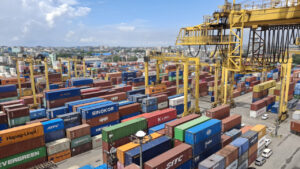The Bilbao Port Authority has put out a tender of €55.4 million ($58.2 million) for the works for the second phase of its Onshore Power Supply (OPS) project.
The aim is to enable vessels to connect to the power grid when berthed, thereby reducing fuel consumption and gas emissions and minimising noise and vibration levels.
The works are scheduled to take 24 months to complete and the deadline for submitting proposals is 31 January.
The project, referred to as BilbOPS, is financed by the Bilbao Port Authority and has been awarded a €14.2 million ($14.9 million) grant by the European Commission under the CEF Transport 2021-2027 funding programme.
These works form part of the Port’s Energy Transition Plan and are also provided for under the objectives of the 2023-26 Strategy Plan to be a green port that drives and supports companies on the road to sustainability.
READ: Ports of Bilbao, Portsmouth set to enhance shipping corridors
This second phase of electrification, the most important and ambitious of the two phases, will be undertaken on Docks A1, A2, A6, AZ3, Getxo 2 and 3, or, more specifically, the ferry and Ro-Pax terminal, the terminal for Ro-Ro traffic, the container terminal and the three cruise ship berths.
As the works will require the power lines to be upgraded for the facilities to provide 30 megawatts (MW) of power, three distribution centres, 11 transformation centres and 11 OPS connection points will be set up on the docks.
To maximise the flexibility of the infrastructure, the port authority said that 20 power sockets will also be provided to serve the quayside regardless of where the ships are berthed.
READ: Ports of Bilbao, St. Lawrence Seaway to improve commercial links
The entire OPS network will be powered by renewable energy, such as PV solar panels distributed over four arrays in different areas of the port, providing a 4.25-megawatt peak (MWp).
The first phase of the electrification of the docks, awarded in December 2023 and focused on Dock A5 of the Central Breakwater of the expansion area, will require an investment of €4.7 million ($4.9 million), with a grant of €4.3 million ($4.5 million) from the Recovery and Resilience Facility.
The new facility is expected to be operational in the first quarter of 2026.








